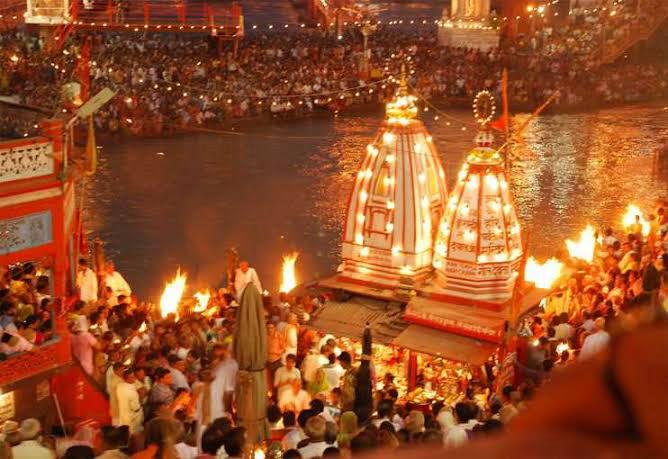Yamunotri
By Lokanath Mishra
Visited Mata Yamuna temple located at Yamunotri on 13.5.25. The Yamunotri trek is a moderately challenging journey, suitable for most trekkers. Spanning approximately 5-6 kilometers, it takes around 3-4 hours to complete. While the trek involves ascending terrain, a basic level of fitness is sufficient to navigate the path.

For those who need assistance, ponies or palkis are available, making the trek accessible to a wider range of visitors. The terrain features scenic gorges, adding to the trek’s natural beauty.

“After a 6.5 km trek, you’ll be rewarded with the breathtaking sight of the vibrant yellow Yamunotri Temple, dedicated to Goddess Yamuna. This sacred shrine is believed to be the source of the Yamuna River and is one of the four revered sites in Utarakhand ‘s Char Dham pilgrimage.

The temple’s Garbha Griha houses a beautiful black marble idol of Goddess Yamuna, adorned with fragrant garlands. Interestingly, an idol of Goddess Ganga in white stone stands beside her, symbolizing the confluence of the two sacred rivers.

According to legend, Yamunotri was once the hermitage of the ancient sage Asit Muni, who bathed in both Yamuna and Ganga. When the sage grew old and couldn’t travel to Gangotri, a stream of Ganga miraculously began flowing alongside the Yamuna.
The temple is surrounded by natural hot springs, including Surya Kund with boiling water and Gauri Kund with tepid water perfect for bathing. The hot springs offer relief to weary trekkers and are said to possess therapeutic properties. In fact, the water is hot enough to cook rice and potatoes!
Before visiting the shrine, pilgrims traditionally take a dip in these sacred waters, believed to cleanse their souls. Goddess Yamuna, daughter of Surya and sister of Yama, is revered as a symbol of purity, and bathing in her waters is thought to bring spiritual renewal.
As I reached Yamunotri, I felt an overwhelming sense of peace wash over me. My journey to this sacred place was not just a physical one, but a spiritual quest to connect with the divine. I began by taking a holy bath in the Surya Kund, feeling the warm waters cleanse my body and soul.
As I performed the Tarpan ritual, offering prayers to my ancestors, I felt a deep sense of gratitude and respect for those who had come before me. I sought their blessings and prayed for their peace and liberation.
As I entered the temple, I was struck by the vibrant colors and the serene atmosphere. I made my way to the sanctum sanctorum, where I had the darshan of Goddess Yamuna. I felt her divine presence envelop me, filling me with peace and tranquility.
As I performed the rituals in the temple, I felt a sense of unity with the universe. I realized that the divine is not just a distant concept, but a living, breathing presence that surrounds us all. The rituals became a means of communing with the divine, of seeking blessings and guidance.
In that moment, I felt a deep sense of connection to my ancestors, to the divine, and to the universe. I realized that we are all part of a larger web of life, connected by threads of love, respect, and tradition. The holy bath, the Tarpan, and the temple rituals all became a means of honoring this connection, of seeking spiritual growth and self-realization.

